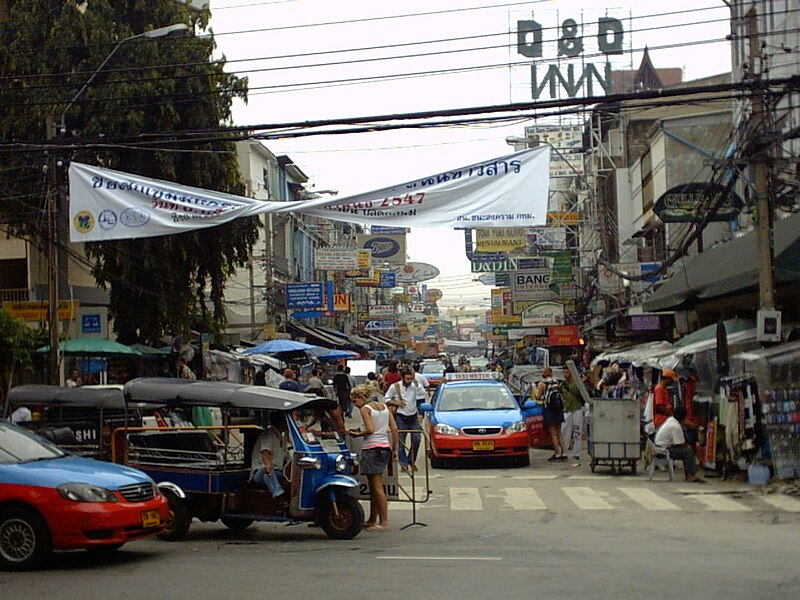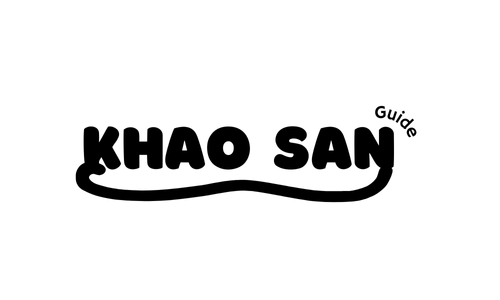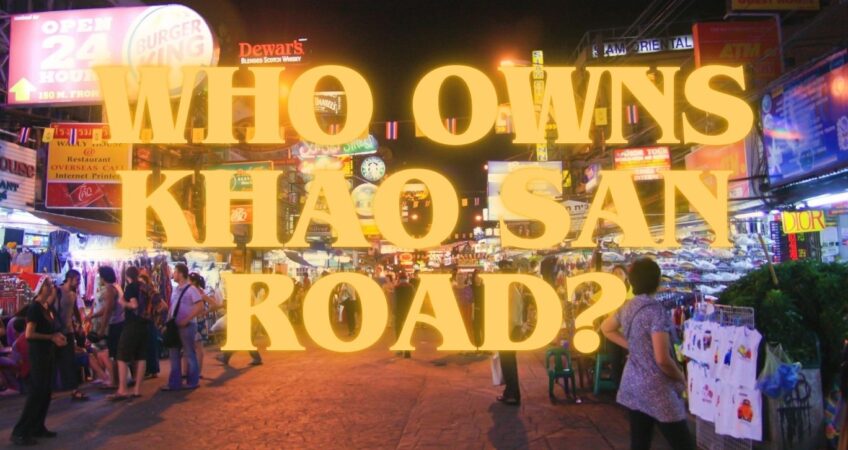Khao San Road is a name that rings a bell for travelers everywhere. This 410-meter strip in Bangkok’s Banglamphu district has come a long way, evolving from a small rice trading hub into a lively hotspot for backpackers and budget travelers. Famous for its buzzing street life, $2 Pad Thai, and mix of cultures, Khao San Road is the epitome of travel energy. But beyond the neon lights, fire shows, and all-night parties, there’s a bigger story — one of historical change, evolving ownership, and cultural identity.
Who truly owns and shapes the soul of this iconic street? To answer that question, we’ll take a closer look at Khao San Road’s history, governance, and economic footprint, exploring the complex web of influences that make it a global phenomenon.
Ownership and Management of Khao San Road

Khao San Road is a great example of how public control and private businesses work together. Local owners and global brands both play a role in shaping the street, creating a unique vibe that makes it stand out.
Government Oversight
The Bangkok Metropolitan Administration (BMA) plays a significant role in managing the road. It maintains the infrastructure, enforces regulations, and oversees vendors through a permit system (with costs ranging from 1,500–3,000 THB per month). The BMA also enforces curfews and vehicle bans during designated hours, ensuring the street stays tourist-friendly.
Private Property and Businesses
On the private side, most of the buildings along Khao San Road are owned by wealthy Thai-Chinese families who have held the land for generations. Key players include the Srifuengfung family, owners of the historic Viengtai Hotel, and the Buddy Group, which operates hotels, restaurants, and nightlife venues.
Business leases in the area don’t come cheap, with storefronts fetching 300,000–500,000 THB ($8,500–$14,000) per month. Alongside Thai-owned enterprises, global brands like 7-Eleven, McDonald’s, and Starbucks have made their presence known, adding a layer of commercialization to the street’s bohemian image.
Meanwhile, the informal economy thrives with over 200 street vendors selling everything from mango sticky rice to T-shirts. Many vendors rent their spots from private landlords or sublease from other operators, creating a fast-moving microeconomy within the district.
From Rice Trading to Backpacker Mecca

The Origins (1892–1980s)
The name “Khao San” translates to “milled rice,” a nod to its origins as a rice trading hub in Bangkok. During King Chulalongkorn’s reign in 1892, the road was paved as part of a modernization initiative to connect commercial areas to the Grand Palace.
For decades, Khao San remained a quiet residential neighborhood, home to local merchants and modest shophouses. Its peaceful silence came to an end in the 1980s, when the backpacker movement brought waves of foreign tourists searching for affordable accommodations in Bangkok.
The Backpacker Boom (1980s–2000s)
The transformation began in 1982 with the opening of the Viengtai Hotel, the first budget guesthouse to cater to Thai tourists. By the late 1980s, Khao San Road had become a favorite stop for Western backpackers following Southeast Asia’s “Banana Pancake Trail.” The area gained a reputation for cheap eats, affordable dorm beds, and visa-run services essential for long-term travelers in the region.
The 1990s saw Khao San’s fame skyrocket as it became the heart of the backpacker subculture. Its legacy was further solidified in 2000, when Leonardo DiCaprio’s The Beach featured Khao San Road as the epicenter of adventure seekers searching for paradise.
The Modern Era (2010s–Present)
Today, Khao San Road attracts 15,000–20,000 daily visitors during peak season. The Bangkok Metropolitan Administration (BMA) has introduced pedestrian-only zones, banning vehicles during the evenings to create a safer and more immersive experience for tourists. Yet while the street has embraced modernity, it still retains its classic charm—a mix of chaos, culture, and connection that draws travelers back time and again.
Balancing Local and Foreign Influences on Khao San Road
There’s a lot of debate about how Khao San Road has changed over the years. Some say it’s lost its authentic Thai vibe, swapped out for neon bars and Western-style menus. Others see it as a lively, multicultural spot where backpackers, digital nomads, and locals all come together.
The Global Attraction
Khao San’s affordability remains its key appeal, offering accommodations for as little as 150–300 THB per night and meals for under 100 THB. Its convenience is unmatched; within 500 meters, you’ll find travel agencies, currency exchange booths, and even fast-track visa services.
Street Culture and Nightlife
At night, Khao San comes alive with music, food stalls, and performances. Bars like The Club and Gazebo spin remixes of Thai pop and Western hits, while fire dancers perform jaw-dropping feats to the cheers of the crowd. Whether you’re sipping a bucket cocktail or getting a henna tattoo, there’s no shortage of unique experiences on offer.
However, the street’s rapid commercialization raises questions about the balance between preserving local identity and catering to global demand. Some long-standing vendors have been pushed out due to rising rents, replaced by convenience stores and souvenir shops.
The Economic Impact of Khao San Road
It’s no secret that Khao San Road is an economic powerhouse. Its tourism industry contributes an estimated 1.5–2 billion THB ($43–57 million) to Bangkok’s economy each year.
Jobs and Revenue
The street supports over 5,000 jobs, from hotel staff and restaurant workers to street performers and tattoo artists. Key sectors include:
- Accommodation: Hostels and budget hotels account for 30–40% of local revenue, with high-season occupancy rates exceeding 80%.
- Nightlife: Bars and clubs generate up to 1 million THB nightly in alcohol sales.
- Food and Retail: Street vendors report daily earnings ranging from 1,000–5,000 THB, depending on the season.
Looking Ahead: The Future of Khao San Road
Khao San Road remains a work in progress. The BMA continues to explore new ways to enhance its appeal, from expanding pedestrian zones to improving waste management. Meanwhile, local entrepreneurs are finding innovative ways to blend tradition with modernity, ensuring that Khao San remains a must-visit destination.
The Soul of Khao San Road
Khao San Road isn’t just a place—it’s a vibrant community brought to life by the people who fill its streets every day. Its charm comes from the way it keeps evolving while holding onto what makes it special—a mix of Thai hospitality, global vibes, and a bit of unfiltered chaos.
For travelers seeking authenticity, adventure, and a bustling cultural crossroads, Khao San Road offers an experience like no other. And that’s why, no matter who owns it, its soul belongs to everyone who steps foot on its storied pavement.



